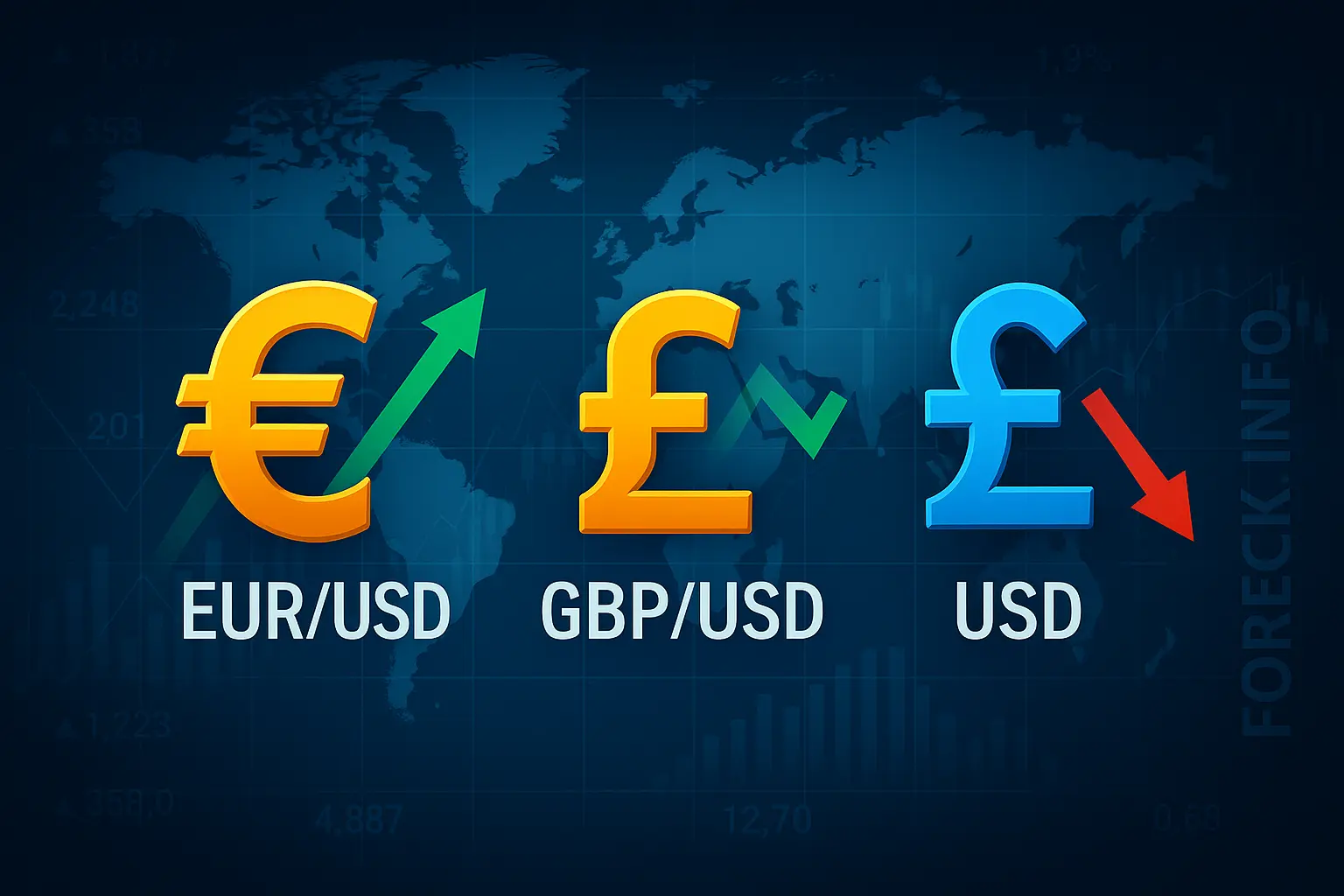US Tariffs: Market Risks and Recession Concerns
The main driver for currency markets is the White House’s plan to impose 25.0–40.0% tariffs on imports from 14 major US trading partners, including Japan and South Korea, starting August 1. While these measures are meant to pressure trade negotiations, many analysts warn of rising recession risks by year-end. Some experts also view the extension of trade talks as a sign of weakening US leverage. There’s speculation that some tariffs may be scaled back or dropped entirely, as Washington initially positioned them as negotiating tactics rather than concrete policy.
Forex Eurozone: Exports Falter as US Tariffs Hit
The euro is strengthening against both the pound and yen, but is showing mixed results versus the dollar. Newly released data from Germany—the bloc’s export engine—revealed that exports fell by 1.4% in May (vs. forecast –0.2%) and imports contracted by 3.8% (vs. –0.9% expected). The trade surplus widened from €15.8B to €18.4B, but analysts link the export slump to the US’s 10.0% tariffs on European goods. If Washington and Brussels fail to finalize a new trade deal soon, the German export sector may see renewed stagnation or even recession in Q2.
United Kingdom: Fiscal Vulnerabilities and Currency Pressures
Sterling is losing ground to both the dollar and euro, while gaining versus the yen. With no major economic releases, market moves are driven by external forces and by the Office for Budget Responsibility’s (OBR) latest report. The OBR warns that the UK’s public finances are at their most vulnerable since the early 1960s. National debt has soared—partly due to generous COVID-19 and energy crisis support—and now stands at nearly 95.0% of GDP. If current fiscal policy persists, OBR projects UK government debt could hit 270.0% of GDP by the 2070s—nearly triple today’s level.
Japan: Tariff Threats Pressure the Yen
The yen is under pressure against all major peers after President Trump threatened a fresh 25.0% tariff hike on Japanese exports if no deal is reached by August 1. Japan’s Prime Minister Shigeru Ishiba expressed regret but confirmed talks will continue. If an agreement fails, Japan’s export-driven economy—especially manufacturing—faces new headwinds, making it harder for the Bank of Japan to tighten monetary policy further.
Australia: AUD Strengthens as RBA Holds Rates
The Australian dollar rallied broadly after the Reserve Bank of Australia (RBA) defied expectations and kept its policy rate steady at 3.85%. Governor Michele Bullock signaled the central bank needs more data to confirm inflation is trending toward the 2.5% target. The market now sees an 88.0% chance of rate cuts in August, but consensus for year-end rates has shifted up to 3.10% from prior estimates of 2.85%.
Oil: Prices Stabilize as Tariff Risks Offset Supply Increase
Oil prices are making modest gains today, supported by strong US demand and renewed Red Sea shipping disruptions. However, supply-side pressures remain: OPEC+ recently agreed to boost output by 580,000 barrels per day, and the US is signaling new tariffs on oil exports from Asia. The American Petroleum Institute (API) will release inventory data at 22:30 (GMT+2), with expectations for a 2.8M barrel draw. A surprise here could fuel further price upside.

